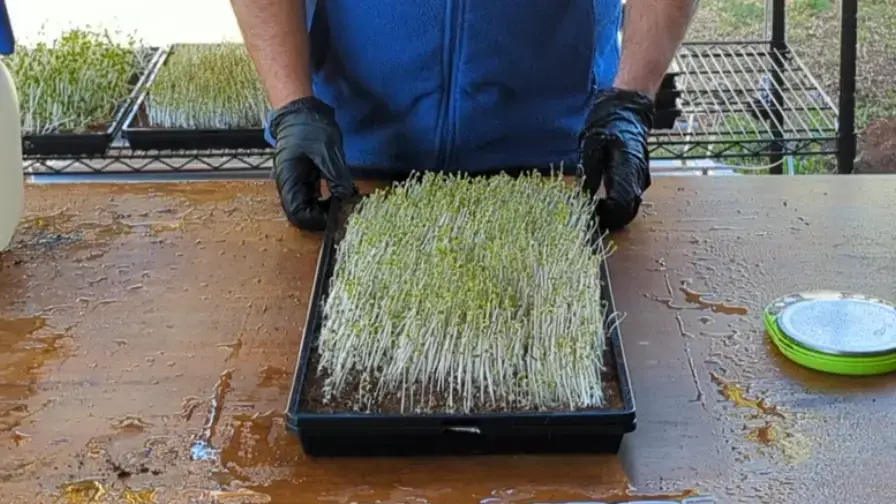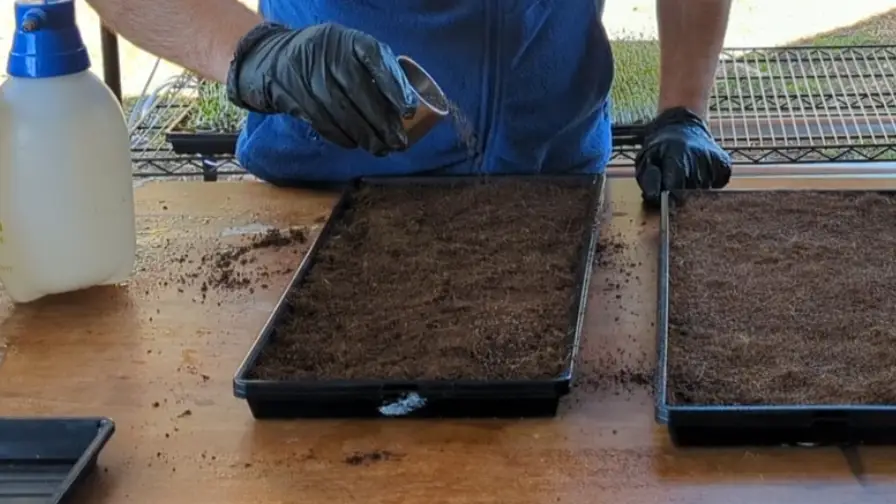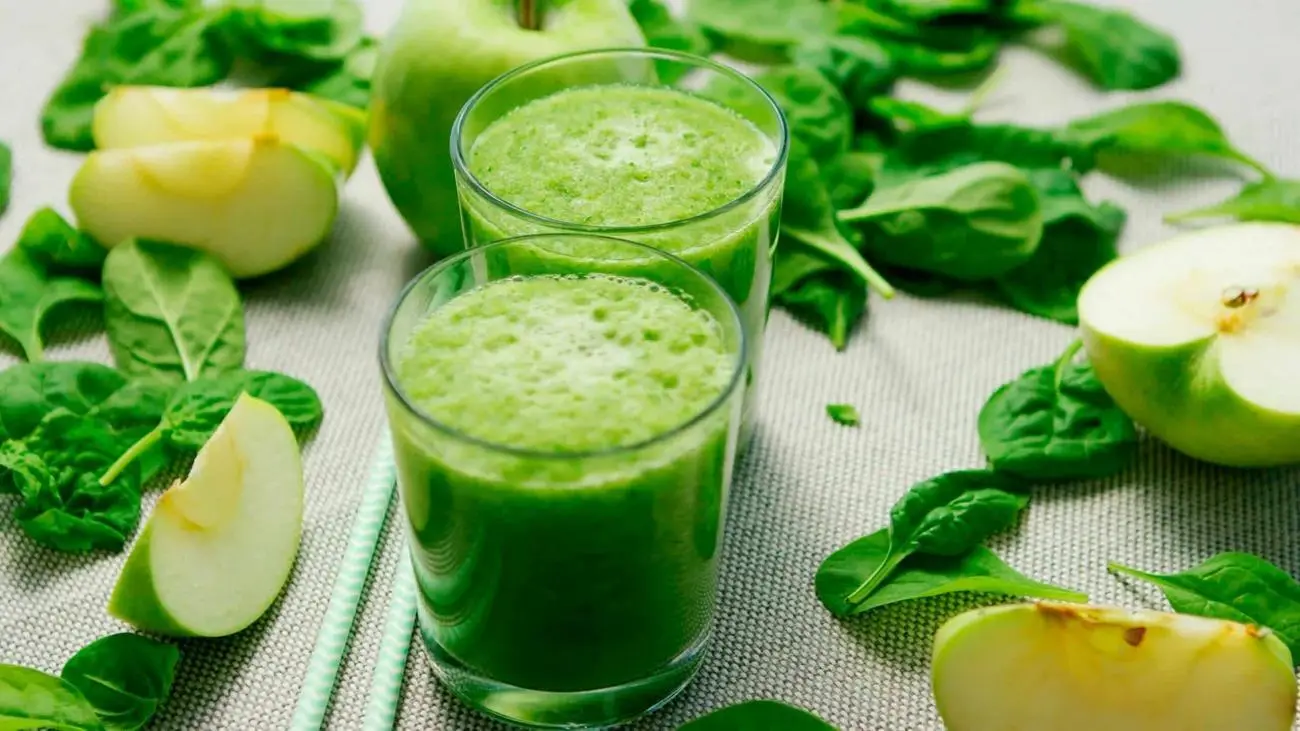Sowing, Growing and Harvesting Microgreens Demonstration

How do you sow, grow and harvest Microgreens?
In this post we will outline the most common steps and considerations for growing Microgreens successfully. The post includes not only our step-by-step written instructions but a You Tube video of me demonstrating how we do it at Natural Yield.
What we are using for this demonstration:
- Bootstrap Farmer trays (holes and no-holes)
- Canna Coco Coir
- Natural Yield's Microgreen Broccoli Seeds
- 2% water dilution of Hydrogen Peroxide for sterilization
- Natural Yield Grow Rack
- Micro Scales
- Harvesting Knife
- Single use gloves
- Harvesting container

Before we get started
The "most common" steps are stated as such because there are variations to the most common method that you will employ based on the particular microgreen variety you are growing, the environmental conditions you are growing in, and the grow media you are using.
We have chosen Microgreen Broccoli because it is one of the most popular varieties and the method demonstrated would work for other varieties. Broccoli does not require pre-soaking and is not sensitive to how it is blacked-out (being under weight or not).
1. Preparation Steps
Preparation of work area - Benches, tools, and bowls should be cleaned and sanitised
Preparation of you - Your hands should be clean and sanitised and gloves should be on
Preparation of Trays - Trays should be cleaned (removing debris) and sanitised using the 2% Hydrogen Peroxide solution. This removes problems of potential bacteria problems in your microgreens.


2. Filling trays with coir
Canna Coir is our favourite grow media. We don't receive anything from Canna for promoting them. Our experience just shows us that their coir is the best we have tried so far. Coir provides advantages over hemp and just plain mesh that we can dig into in another post.
Place your Bootstrap 1020 holes tray into your Bootstrap 1020 no-holes tray.
Mound the coir into the tray. Using your hands (this is another reason you want gloves) remove the lumps from the coir and spread evenly and as flat as you can in the tray.
3. Sowing Microgreen Seeds
Follow the instructions on the Natural Yield seed packet. This provides specific instructions for the variety of seeds you have purchased.
For Broccoli Microgreens we want to sow 28 grams on the 1020 trays. Measure out the seeds in the micro scale (precise to 1 mg).
How you sow it is your preference. Some people like sowing with their hand. I like sowing straight out of a cup. The important thing is that the seeds are not clumped together but spread as evenly as possible.


4. Misting, Blackout and Racking
At Natural Yield, for Microgreen Broccoli, we mist the sown seeds so that they are saturated. Be careful that you don't water them so much that water is pooling. You want it visibly wet but not drenched.
Either stack the trays or use humidity domes on each individual tray. We have found no particular advantage in weighting the trays as far as Broccoli Microgreens go. If you stack the trays remember to put a sterilised tray on the top, and you probably don't want to go more than 4 high as they can topple over as the microgreens grow.
Lastly, put the trays on the Grow Rack. There is no need for lighting of course as the will be under blackout for 3-5 days.
5. Growing and putting under light
Different varieties will have different timing for when they come out from blackout (if they are in blackout at all). Depending on the environmental conditions Broccoli Microgreens will take about 3 - 5 days to be ready. If you have stacked them you will notice they are ready to come out as they will push the trays above up! You want them to be about 10mm high.
The advantage of not stacking them is that you don't have to worry about cleaning the underside of the tray above. Otherwise, as you unstack them you will have to individually brush off the debris from the underside of the tray and then re-rack them. If they are under humidity domes you just need to take the dome off where they are already racked.


6. Bottom watering
The microgreens are now going to grow! They will be quite pale when you first bring them out from blackout but will green-up in a day.
Bottom Watering - You will water the trays by lifting the top tray up enough to put enough water on the bottom tray to cover the tray, but not enough to over-dampen the media. It is the roots that need water, not the tray! Depending on the weather you will need to water either once or twice a day - if its really hot or you have them outside you will need to keep a much closer eye on them. It is good to do the first water in the morning. If you look at the tray and there it is still got residue of water you can leave it until the tray looks dry. You don't want the roots to dry out.
7. Air-Flow, Temperature and Humidity
In combination with how you are watering, the environmental factors of air-flow, temperature and humidity will be big determinants of your microgreen growing success.
As a common rule microgreens are going to enjoy 25 degrees Celsius and not more than 65% humidity. Different microgreens have different requirements but this range is a good general guide. We have done other posts on these subjects you can refer to.
Air-Flow is important because it keeps air moving around the microgreen canopy which prevents mold from forming. This is more important as temperature and humidity rises. If you are not growing in a controlled environment then these could be frustrating factors for you.
It is important to realize that air-flow does not lower the temperature of rooms - it can give the impression of being cooler because as air-flow moves across your sweaty skin it cools that water. Plants don't have skin however!
You can use Rack mounted fans (PC-Fan style) or place larger fans strategically around the room. Keep in mind you don't want dead-spots where there is no air-flow and this is hard to achieve without multiple fans.


8. Harvesting!
Finally, we get to the reward at the end of the short journey of the microgreens.
You want to harvest the microgreens at or before the formation of the "true leaf". The two leaves that broccoli microgreens form immediately are the cotyledons, while the true-leaf is the third leaf that forms in about 7-10 days.
When you harvest keep in mind the same cleaning and sanitisation steps you took before. Clean and sanitise your work area, tools, containers and hands. Wear gloves!
Using your non-dominant hand, gently collect-hold the microgreen stems. Using the dominant hand with the harvesting knife, carefully slice as low as you can without picking up coir in long, smooth strokes, and then place the harvest in a suitable container. Different varieties will require different methods due to the nature of their stems (eg. there is a big difference in harvesting Amaranth which is very fragile, or Pea shoots which are quite strong).













